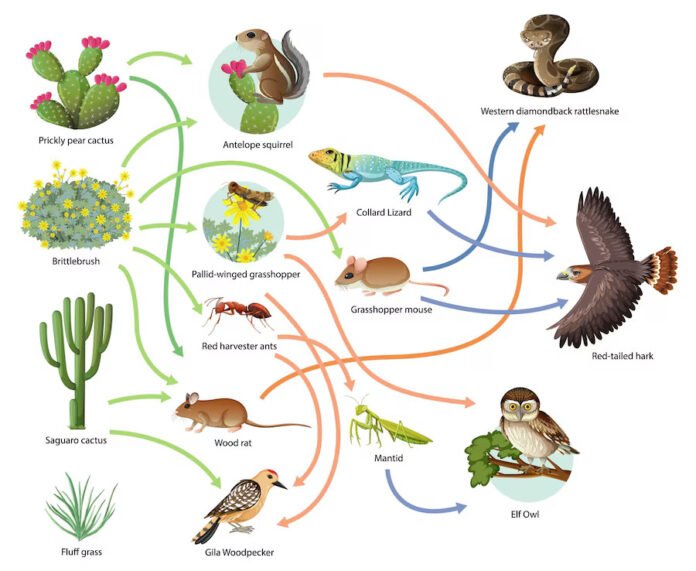Introduction
Earth has billions of living animals ranging from small micro-organisms to huge animals and plants. We can see different types of plants, insects, birds and animals every day. These living organisms are classified into several categories. This method is called the classification of living things. This classification applies to all living and extinct organisms.
Classification generally involves the systematic arrangement of organisms into hierarchies. The science of classification of all organisms is called taxonomy.
Learn more about taxonomy and classification systems in this article. Also, learn the reasons and benefits for the classification of living organisms.
What is taxonomy
Taxonomy is derived from ancient Greek ‘taxis’ and ‘nomia’. These words mean ‘arrangement’, and ‘method’ respectively. Taxonomy is the scientific study of naming, defining and classifying biological organisms. This classification is dependent on the shared characteristics of organisms. They are normally grouped into taxa and given taxonomic ranks. They can be converted into higher and lower taxa levels.
Evolution, ecology, genetics, and comparative physiology have significantly changed the field of classification. The binomial nomenclature system is now a commonly accepted format for the taxonomy of organisms. This system was first created by Swedish naturalist Carolus Linnaeus in the year 1750.
History of classification of living beings
- Formal and limited classification systems existed in the ancient world.
- A catalogue of 365 species of medicinal plants was found in China. This formed the basis of several hydrological studies and was dated to the first millennium BC.
- Ancient Egyptian medical Papyri also provided descriptions of various medicinal plants. They also contained directions on how to treat illnesses and injuries. This manuscript was dated from 1700 to 1600 BCE.
- One of the first classification systems in the western world was done by Aristotle. He described a large number of plants and animals as part of his system. He even ranked organisms in simple to complex order. However, his order was not perfect or evolutionarily relevant. The Aristotelian method dominated organism classification until the 17th century.
- Carolus Linnaeus is usually regarded as the founder of modern taxonomy. Linnaeus drew up the rules for assigning names to plants and animals.
- He initiated the modern botanical and zoological nomenclature. He was also the first to use binomial nomenclature in 1758. The standard hierarchy of class, order, genus, and species was also introduced by him.
- Newly discovered information has now resulted in a better classification system. This is now closely resembling the natural system.
- The definitive impact of Darwinian evolution on classification can also be observed. Also, genetic tools are paving the way for a new wave of classification and reclassification of organisms.
Why are all living organisms classified?
- All these living organisms have different sizes, and colours, along with many other characteristics.
- It is impossible to study each of them without any categorization. Due to this, scientists classify all living organisms into distinct groups.
- Biological classification enables the observation of relationships between various organisms.
- Various groups or taxon classify organisms as per their similarities and differences. Any organism can now be identified to its specific taxon.
- Classification is essential to understand the relationships among groups of organisms. Classification helps us to deal with systems biology research.
- It also helps us understand the evolutionary processes in a better way. It also enables us to estimate how complex organisms evolve.
- Genetic research and classification techniques complement each other. They are also helping palaeontology research substantially.
Current classification systems:
The classification of living things is hierarchical. It places organisms in several levels or ranks according to their genotypic and phenotypic similarity. All living organisms are primarily separated into kingdoms. However, the kingdom level is not the highest in classification.
Commonly accepted kingdom-level classification includes:
Kingdom Monera: Includes bacteria, archaebacteria and blue-green algae. This is a vast kingdom covering most microorganisms.
Kingdom Protista: Unicellular and multi-cellular algae are classified in this segment.
Kingdom Fungi: Eukaryotic, multicellular organisms such as yeasts and moulds are included in this group.
Kingdom Plantae: All nonvascular and vascular plants are included in this kingdom. Primary divisions in this group are based on flowering and non-flowering plants.
Kingdom Animalia: Multicellular animals, several protozoan clades, and microscopic animals are included in this group.
These kingdoms are further divided and classified into smaller groups or clades. The standard lowest level of classification is the species. However sub-species levels also exist for a few organisms.
Recommended Articles:
Construction of Perpendicular Line Through a Point, Steps, How to, Examples
Diffusion Definition, Types, Examples, Factors and Significance
Construction of Angles: Using Protractor and Compass, Steps of Constructions, Examples
CBSE Class 12th Physics Exam Preparation Tips For Students
Why are living organisms classified? FAQs
What are the basic hierarchical classification groups for living things?
The hierarchical system of classification places organisms in various taxa. All taxa are divided into smaller and larger groups. Hierarchically the existing system includes Kingdom; Phylum, Class; Order; Family; Genus; and Species.
What is the binomial system used in the nomenclature of organisms?
The binomial system of naming species involves two names in Latin called scientific names. The scientific name of organisms is derived from their genus and species level. eg. Genus: Homo Species: Sapiens is called Homo Sapiens.
Why do classification systems constantly change?
Millions of plants, animals, and microorganisms remain undiscovered or unclassified. Discovering new species and new data on existing species is a major factor in reclassification. Some discovered organisms do not fit in existing systems and require change. Therefore new classification systems have to be devised now and then to accommodate all of them.
What are the benefits of recent advancements in taxonomy?
The emergence of molecular phylogenetic tools enables us to compare the DNA of different organisms. This has resulted in classification at the genetic and proteomic levels. This helps in directly comparing evolutionary relevance (phylogeny).
How living organisms are classified?
Living things are divided into five kingdoms: animal, plant, fungi, protist and monera.
